Introduction
Excessive tearing can be caused by two basic mechanisms, overproduction of tears or blockage of tear drainage system of the eye. Sometimes a combination of the two can coexist.
The tears are produced by lacrimal gland located lateral aspect of the eye. Tears drain away from the eye through two small openings present at the inner corner of the eyelid. When the eyelids blink, tears drain into these openings, and subsequently reach nasal cavity, through a passage called nasolacrimal duct.
Nasolacrimal Obstruction
Blockage of the tear drainage system is a common cause of painless and spontaneous tearing. The affected eye has to be frequently wiped throughout the day as the tears drip down onto the facial skin. Prolong dripping and wetting of the skin and frequent wiping can cause excoriation of the skin around the eyes. In long standby obstruction, can cause infection to lacrimal sac which need admission for treatment.
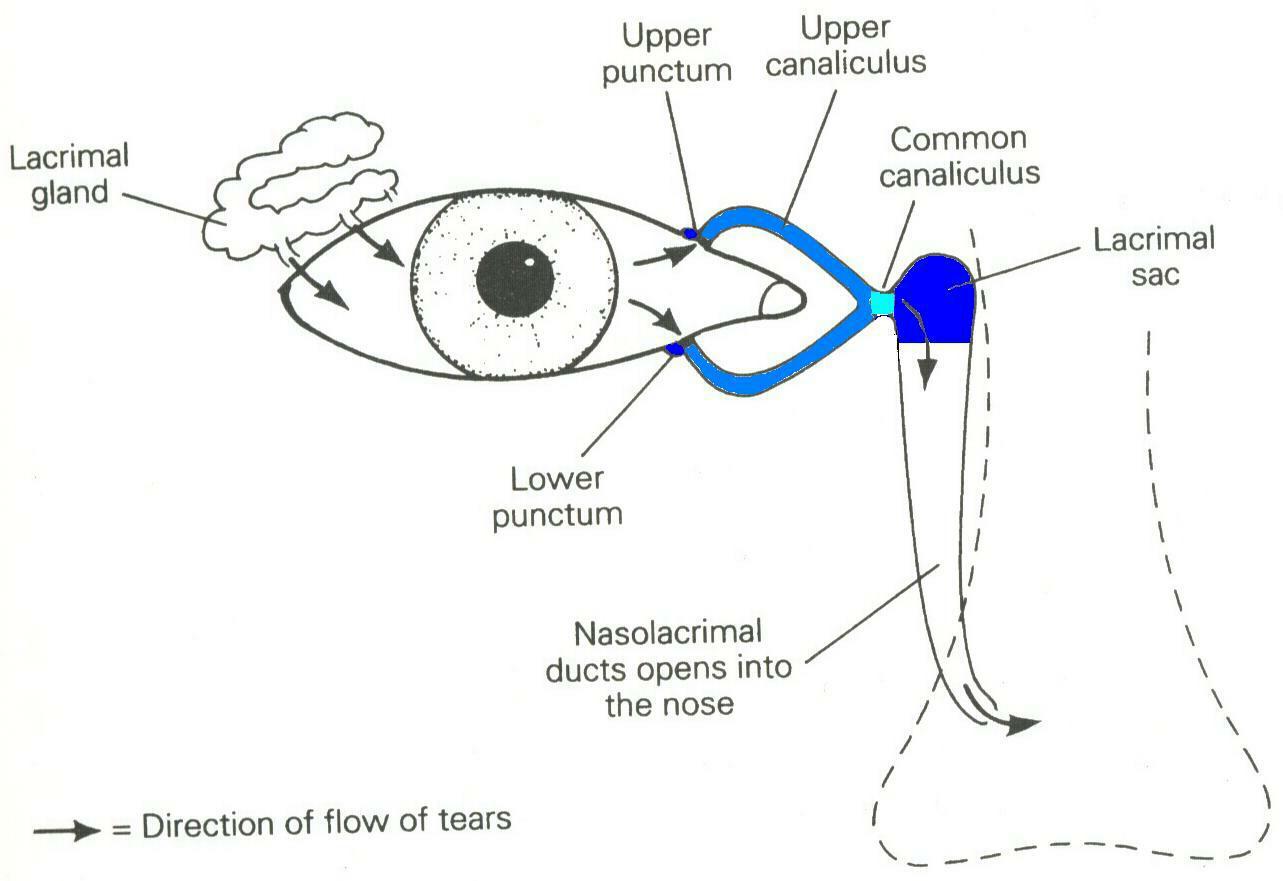
Diagram showing drainage system of tears
Syringing is done to locate the site of obstruction. This is important to decide the technique of operation to be carry out. Surgical treatment aims to create a new opening for tears to drain into the nasal cavity. This help to relieve this condition.
Other Conditions capable of causing excessive tearing are listed below:
1. Conjunctivitis
Eye infection with tearing, discharge, redness and lid swelling.
2. Corneal problem
Corneal irritation, dry eye, corneal abrasion, in-turned eyelashes, and corneal foreign body can lead to tearing with foreign body sensation or pain.
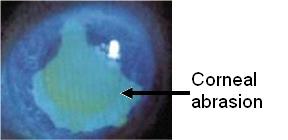
Photograph showing corneal abrasian
3. Ectropion
Out-turning of eyelid margin leads to watery eye due to improper position of punctum. As a result, tear is collected in the eye and not drained into the nasal cavity.
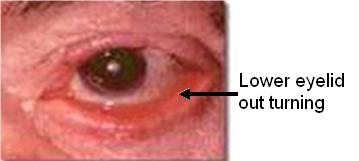
Photograph of eye with ectropion
4. Entropion
Inward turning of eyelid margin is called entropion. In this condition, the eyelashes will rub the cornea causing corneal irritation. This in turn cause watery eye.
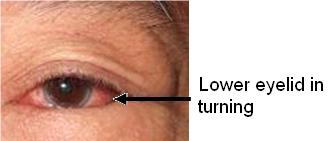
Photograph of eye with entropion
5. Congenital Glaucoma
Watery eye in baby is commonly due to delay opening of nasolacrimal duct. However, it can also be the symptom and sign of congenital glaucoma that need early examination by eye doctor. Delay in diagnosis and treatment can leads to blindness.
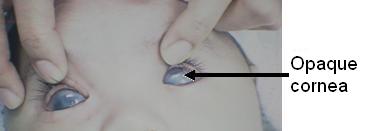
Photograph of eyes in congenital glaucoma (The eye may appear large and prominent with hazy cornea).
| Last Reviewed | : | 23 August 2019 |
| Writer | : | Dr. Joseph Vijaya Alagaratnam |
| Reviewer | : | Dr. Rosniza bt. Ab. Razak |







